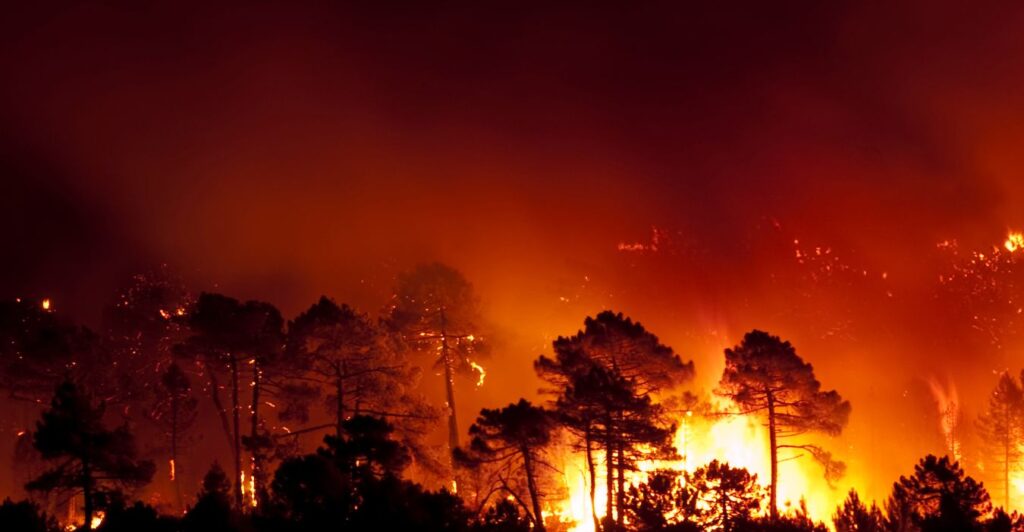
The recent wildfires in Los Angeles County have not only devastated homes and displaced communities but have also set the stage for another, potentially more insidious threat: debris flows. These destructive torrents of mud, rock, and water, often triggered by rainfall, pose a significant risk to areas already scarred by the blazes. Scientists and emergency responders are working diligently to assess the danger and warn residents, as avoiding these flows is the only surefire way to stay safe.
The Ferocity of Debris Flows

While flash floods are undoubtedly destructive, debris flows surge with even greater ferocity. At least half of their volume is sediment mixed with burned trees, cars, and boulders. As geologist Jaime Kostelnik of the United States Geological Survey (USGS) puts it, “It’s like concrete moving downhill.” Debris flows carry more material than flash floods, swelling to be up to five times as high, a “flood on steroids.”
Speed and Devastation

Debris flows can reach speeds of approximately 35 miles per hour as they careen vast distances through valleys, canyons, and stream channels. Some gain so much momentum that they jump out of the channels they’re following and carve new paths, clogging and overflowing channels in a flash.
The Montecito Tragedy

The devastating potential of debris flows was tragically demonstrated in Montecito, Calif., in January 2018. Just a month after the Thomas Fire, debris flows killed 23 people and destroyed more than 100 homes.
High-Risk Terrain in Los Angeles County

The mountainous areas of Los Angeles County are known for hosting debris flows after intense blazes like the Palisades and Eaton fires. Debris flows occurred after the 2009 Station fire and 2016 San Gabriel Complex fire. Both of those blazes occurred near the ongoing Eaton fire, Kostelnik notes.
Assessing the Landscape

Spurred by the possible threat, teams of scientists, including Kostelnik, are already assessing the extent to which the Los Angeles wildfires have primed the landscape for debris flows, even as new fires roar to life in the region. The researchers’ findings will inform decisions about when and where to warn people about the hazard. That’s crucial because avoiding debris flows is the only fail-safe way to stay safe from them.
Rapid Deployment and Vegetation Loss

The teams of scientists and engineers from federal and state agencies began surveying the areas burned by the Palisades and Eaton fires — the two largest of the recent Los Angeles wildfires — as well as the smaller Kenneth and Hurst fires. A big reason for deploying to the burned areas so soon is that it’s already winter, and debris flows are triggered by precipitation, says geologist Jeremy Lancaster of the California Geological Survey in Sacramento. “We assume that it’s going to rain soon because we’re in the middle of the wet season, so we deploy rapidly.”
Fire’s Effects on Soil

Then there’s how the fires alter the dirt. Gases released by burning litter and vegetation can seep into the ground, where they cool and condense as a waxy substance that coats soil particles. These waxy particles form a hydrophobic layer that prevents water from percolating into the soil, resulting in more runoff on the surface. Additionally, heat from fires can disaggregate soil particles, promoting their erosion.
Eaton Fire’s High Risk

Between the two fire areas, the Eaton fire’s burn scar appears to pose a greater risk for debris flows. “The Palisades burn area has much more gently sloping terrain and watersheds that flow to the ocean,” Lancaster explains, while “the Eaton [fire area] has extremely steep watersheds sloping down into Altadena, Pasadena, all the way out to Monrovia.”
Impact on Wildlife

Debris flows have a devastating impact on wildlife habitats, obliterating ecosystems and displacing or killing animals. The rapid surge of mud, rocks, and debris can bury nesting sites, contaminate water sources, and destroy vegetation that provides food and shelter. The long-term effects include habitat fragmentation and reduced biodiversity as the altered landscape struggles to recover.
Hazard Maps and Warnings

The teams’ field observations have already been entered into USGS computer programs that generate maps showing where debris flow hazard is greatest. Those maps, which are publicly available online, will later inform decisions by officials to issue alerts, warning and evacuation orders.
Staying Safe

Emergency planners try to anticipate debris flows and flash floods using these hazard maps and weather forecasts. They watch for storms that could drop more than a certain amount of precipitation onto severely burned slopes. Drawing from the same resources as the NWS, emergency managers and officials from city and county governments may issue evacuation orders to affected residents.
Long-Term Risk

Complicating the anxiety and exhaustion is the fact that debris flow risk can remain heightened for two to five years after a fire, depending on precipitation patterns, Laber says. It’s been really dry, so it might take a couple more years before we get enough rain where we get the vegetation coming back, where it’s really starting to recover.”
Discover more of our trending stories and follow us to keep them appearing in your feed

The Real Cause Behind Los Angeles’ Devastating Wildfires
10 Species Most at Risk During California’s Devastating Wildfires
The War on Cows Is Over—And Green Extremists Have Lost
Lake Shasta’s Remarkable Comeback From Drought Captured in Stunning Images
References:
Reference 1
Reference 2
Reference 3
This article first appeared here
Stay connected with us for more stories like this! Follow us to get the latest updates or hit the Follow button at the top of this article, and let us know what you think by leaving your feedback below. We’d love to hear from you!







